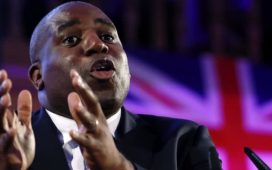Last week, the UK’s West Coast rail line was running two hours behind schedule, amid power outages and thunderstorms. On Wednesday, however, it delivered two new operating partners — FirstGroup and Trenitalia — ahead of time, in a political environment no less murky or hostile. For shareholders in the former, though, the question is the same faced by those in the queues at Euston: do we really want to get on board?
Passengers may deem the early arrival of a new operator a pleasant surprise. A West Coast franchise decision had not been expected until Keith Williams concluded a government review of the entire rail system. Now, under a two-phase deal running to 2031 — including High Speed 2 services from 2026 — First Trenitalia will add 260 weekly services, simplify fares and replace dirty diesels. It will even bring back the sandwich trolley. Investors might be surprised, too, but less pleasantly. A FirstGroup bid for a potentially lossmaking franchise had been opposed by activist shareholder Coast Capital. It went off its trolley at the annual meeting, having called UK rail franchising “extraordinarily destructive of capital”.
Why, then, is FirstGroup pressing ahead on a difficult journey? Possibly because there is less risk of profits being derailed than previously thought.
Revenue risk will be shared through two mechanisms that appear aligned with Mr Williams’ early thinking. A GDP adjuster will see FirstGroup Trenitalia pay less to the government if the UK economy shrinks markedly, and more if it grows strongly. A second mechanism will see more paid by First Trenitalia if ticket sales are higher than in the bid assumptions, and less if they are lower. It is the first time risk and reward has been balanced between government and operator in this way, and the first time franchisees have had financial protection since the “cap and collar” approach a decade ago.
FirstGroup admits passenger revenue growth will be slower than before but guides to an operating margin near the 4 per cent range. Tellingly, it calculates that its South Western and Transpennine franchises which lost £200m would have been profitable under this new mechanism.
Pension funding risk, which incumbent Stagecoach refused to take on and is now suing over, also appears less of an issue as liabilities will pass to government after phase one of the deal. So First Trenitalia need only make five years of known contributions.
Political risk may also have lessened, despite the increased possibility of a government led by the pro-nationalisation Labour party. As one rail insider put it, political priorities and a lack of necessary skills might see only the more troubled franchises taken back by the state.
With FirstGroup struggling to sell its US Greyhound business, investors such as Coast may reach the same conclusion as the passengers: rail might try the patience but it can be better than the bus alternative.
Balfour: underrated
It takes on low-margin construction work. It has the UK government as a customer. It has had problems with working capital. Why, then, has it not gone the same way as Kier, Interserve or Carillion? Because it — the FTSE 250 contractor Balfour Beatty — has been managed very differently in three important ways, which Wednesday’s half-year results again demonstrated.
First, a focus on margin and cash has been prioritised since chief executive Leo Quinn embarked on a turnround plan in 2015. A more selective approach to contract bids has lifted Balfour’s underlying operating margin in UK construction from an almost pointless 0.5 per cent to 1.7 per cent in the last six months, with an industry standard 2-3 per cent now expected for the full year. Analysts also note strong cash flows have helped Balfour’s average net cash rise to £290m, and its full-year guidance to £280m-£300m with working capital improving as legacy contracts are resolved.
Second, strong investment portfolio performance — and a realistic directors’ valuation of those assets — has provided stability. Balfour’s latest valuation was unchanged at £1.2bn despite the net disinvestment of £15m.
Third, the group has diversified to manage risk. More than 50 per cent of its business and assets are now outside the UK, in the US and Hong Kong.
Why, then, have its shares gone in the same direction as those of Kier, its last remaining listed equivalent?
A suspension of fees from US military housing contracts while allegations of mishandling of the work are pursued has damaged market sentiment — even though it may only affect 0.2 per cent of the $33m income involved. That leaves Balfour’s £1.2bn investment portfolio accounting for 86 per cent of its current market value, leaving its earnings-based businesses valued at just £230m — or less than two times their forecast earnings. As analysts at broker Numis noted, that valuation is “ludicrous” and must eventually re-rate — even in a sector once home to the likes of Interserve and Carillion.
matthew.vincent@ft.com












